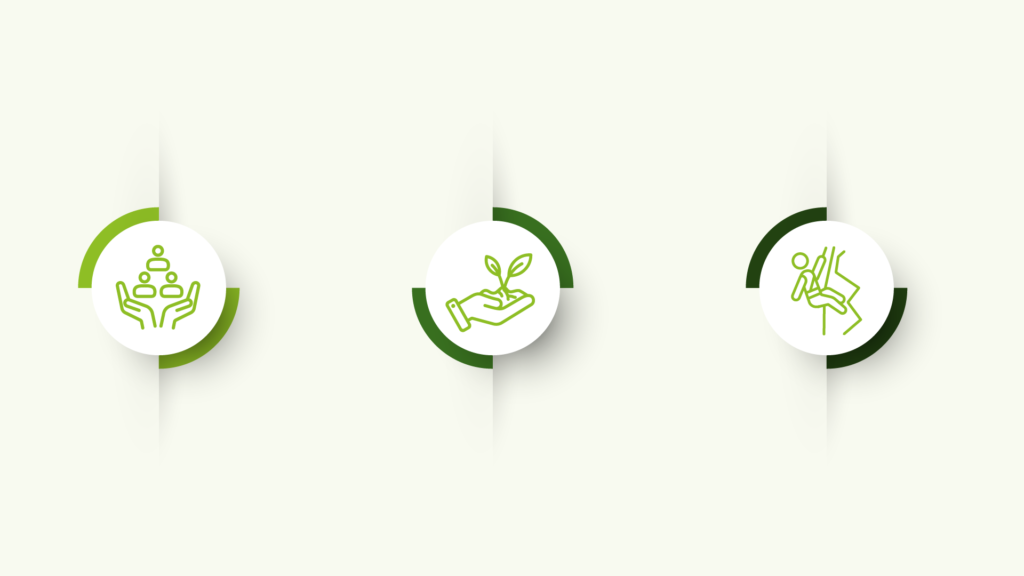Defined by the European Commission as the “completion of Industry 4.0,” Industry 5.0 represents a cultural revolution based on human-centricity, resilience, and sustainability: a vision that prioritizes people and their well-being, aims to make businesses more adaptable and resilient to changes and crises, and promotes environmental protection by reducing CO₂ emissions.
Industry 5.0 will be a Collaborative Industry, a business model characterized by cooperation between humans and machines to create added value in production. This approach will enable the development of personalized products tailored to meet consumers’ needs. For Italian companies, including those in the packaging supply chain, this paradigm represents not only an opportunity to innovate processes and products but also a significant challenge requiring substantial investments, advanced skills, and strategic vision.
1. What Is Industry 4.0?
Industry 4.0 represents the fourth industrial revolution, characterized by the introduction of advanced technologies such as the Internet of Things (IoT), artificial intelligence (AI), advanced robotics, cloud computing, and big data. These technologies enable the creation of smart factories where machines, systems, and people are interconnected, allowing for highly automated and optimized production.
Production processes are fully interconnected and monitored using digital technologies, low-cost sensors, and wireless connections, which are integrated with enterprise management software.
2. Industry 5.0: What It Is and How It Differs from the Fourth Industrial Revolution
Industry 5.0 is built on the integration of sustainability principles with innovations such as AI, IoT, and big data to shape resilient and intelligent factories. Its primary goal is to merge human creativity with the opportunities provided by emerging technologies, redefining the path for companies that aim to combine sustainability with industrial automation.

In Italy, the Industry 5.0 model is supported by measures such as those included in the Transition 5.0 Plan, which is based on three guiding principles:
- Human-centricity: Technology is used as a tool to adapt production processes to human needs, ensuring workers are not forced to conform to new technologies.
- Environmental sustainability: Circular economy processes optimize resource use, reduce waste, and lower environmental impact and CO₂ emissions.
- Resilience: Industrial production must adapt to cyclical economic crises through flexible processes capable of withstanding changes.
The essence of Industry 5.0 lies in the humanization of technology, designing processes and systems that are not only efficient but also improve the quality of life for workers and society as a whole.
3. Transition 5.0 for the Packaging Sector
The Transition 5.0 Plan is a critical tool for revitalizing investments in machinery and systems in Italy. To qualify for incentives, assets must meet Industry 4.0 standards while also achieving a minimum energy savings of 5% compared to the previous setup.
A crucial aspect of the plan is the interpretation of the term “process impacted by the investment.” A restrictive interpretation, which limits the scope of analysis to the asset being replaced or directly affected by the investment, would simplify the calculation of energy savings, providing a clear basis for comparing pre- and post-investment scenarios.
In this context, Ucima (the Italian Packaging Machinery Manufacturers Association) is engaging with the Ministry to support this restrictive interpretation. Additionally, Ucima has proposed dividing the packaging process into distinct categories to facilitate evaluation, including:
- Primary packaging machinery
- Secondary packaging machinery
- Tertiary packaging machinery (transport packaging and end-of-line systems)
- Labeling, coding, and marking systems
- Inspection and quality control systems
- Feeding, handling, and internal logistics systems
- Washing and sterilization machinery
- Product assembly systems
Unlike the Industry 4.0 Plan, which relied on seven standard technical requirements, Transition 5.0 focuses on achieving a minimum 5% energy savings. This necessitates a greater reliance on the starting conditions within the client’s facility.
4. Opportunities of Transition 5.0 for the Packaging Supply Chain
The Transition 5.0 Plan offers a dual opportunity: enhancing production efficiency with next-generation technologies while accessing significant fiscal incentives.
New packaging systems not only reduce energy consumption but also optimize material use, minimizing waste and lowering operational costs. Every euro invested in packaging machinery through Transition 5.0 represents a step towards sustainability and a competitive advantage that makes businesses more agile and better prepared for future challenges.
5. Resources Available for Transition 5.0
For the 2024-2025 period, €6.3 billion has been allocated, divided as follows:
- €3.78 billion for energy efficiency investments
- €1.89 billion to support renewable energy self-consumption and production
- €630 million for workforce training
Requirements for Incentives
Investments must achieve:
- A 3% reduction in energy consumption per production unit, or
- A 5% improvement in efficiency for processes impacted by the investment.
The tax credit allows for savings of up to 35% of total costs and can be applied to tangible assets and projects related to digitalization or environmental sustainability. The credit increases to 40% if the reduction in energy consumption of the production facility exceeds 6%, or exceeds 10% for processes, and rises to 45% for reductions exceeding 10% and 15%, respectively, in relation to the consumption of the production facility and the process.
6. Conclusion
The Transition 5.0 Plan is much more than a simple technological upgrade: it represents a fundamental transformation in how the packaging sector thinks about and develops its solutions. With a human-centric approach, the industry can create innovative, sustainable systems that meet customers’ needs.
By strategically investing in technology and workforce skills, packaging companies can successfully navigate this transition, building a future that is more resilient, efficient, and sustainable.


